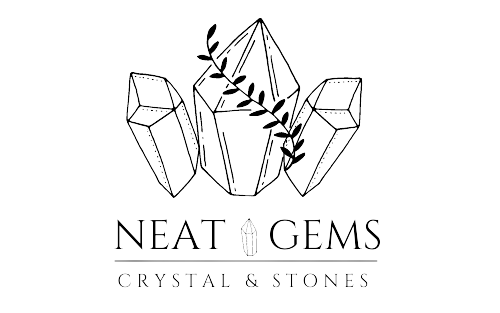The world of gemstones is full of mesmerizing combinations, but few can rival the captivating union of Adamite and Pyrite. This celestial pairing brings together the soft, ethereal glow of Adamite and the fiery, metallic sheen of Pyrite, creating a visual symphony that is both soothing and striking. As we delve into the world of these two gemstones, we’ll explore their unique properties, formation, and symbolism, as well as the ways in which they complement each other in a truly magical way.
The Celestial Gemstone: Adamite
Soft Glow of the Celestial
Adamite, a copper-based gemstone, is often referred to as the “celestial gemstone” due to its soft, ethereal glow. Its delicate, powdery blue-green hue evokes the serene beauty of a clear summer sky. Adamite’s unique color is a result of the presence of copper, which gives it a subtle, shimmering quality that seems almost otherworldly.
Hardness and Clarity
Adamite is a relatively soft gemstone, with a Mohs hardness of around 3.5-4. This makes it more prone to scratching and wear, but its delicate nature is also part of its charm. In terms of clarity, Adamite is often opaque or translucent, with a subtle, waxy luster that adds to its dreamy, celestial appearance.
Formation and Origin
Adamite is typically found in arid, copper-rich environments, such as Chile’s Atacama Desert. It forms through the natural oxidation of copper ore, resulting in delicate, crystalline structures that seem almost extraterrestrial in origin.
The Fiery Gemstone: Pyrite
Golden Glow of the Earth
Pyrite, also known as “fool’s gold,” is a metallic gemstone with a rich, golden hue that seems to emanate from the very core of the earth. Its cubic crystalline structure gives it a distinctive, geometric appearance that’s both rugged and beautiful.
Hardness and Clarity
Pyrite is a relatively hard gemstone, with a Mohs hardness of around 6-6.5. Its clarity can vary, but high-quality Pyrite is known for its sparkling, mirror-like finish that seems to reflect the very essence of the earth.
Formation and Origin
Pyrite is formed through the natural cooling of magma, resulting in the crystallization of iron sulfide. It’s often found in igneous and metamorphic rocks, and is mined in countries such as Peru, Spain, and the United States.
The Harmonious Union of Adamite and Pyrite
A Celestial Dance of Contrasts
When paired together, Adamite and Pyrite create a striking contrast of colors, textures, and energies. The soft, ethereal glow of Adamite seems to calm the fiery, metallic sheen of Pyrite, while the rugged, geometric structure of Pyrite grounds the celestial, dreamy quality of Adamite.
Symbolism and Imagery
The combination of Adamite and Pyrite is rich in symbolism and imagery. Adamite represents the realm of the divine, the soft, gentle touch of the celestial. Pyrite, on the other hand, embodies the fiery, energetic pulse of the earth. Together, they create a harmonious balance of opposing forces, a union that celebrates the beauty of contrast.
Style and Versatility
While the combination of Adamite and Pyrite is undeniably captivating, it may not suit every style or aesthetic. Those who prefer bold, statement pieces may find the soft, delicate nature of Adamite too subtle, while the rugged, industrial quality of Pyrite may appeal more to those who appreciate edgy, avant-garde fashion.
| Gemstone | Hardness | Clarity | Color | Formation |
|---|---|---|---|---|
| Adamite | 3.5-4 | Opaque to translucent | Soft blue-green | Copper-rich environments |
| Pyrite | 6-6.5 | Transparent to opaque | Golden | Igneous and metamorphic rocks |
The Cosmic Connection: Astrological Associations
Adamite and the Realm of the Divine
In astrological terms, Adamite is often associated with the celestial realm, representing the gentle, guiding light of the stars. It’s said to promote spiritual growth, intuition, and a deeper connection to the universe.
Pyrite and the Pulse of the Earth
Pyrite, on the other hand, is linked to the fiery, energetic pulse of the earth. It’s believed to enhance creativity, motivation, and a sense of adventure, encouraging individuals to tap into their inner spark.
The Alchemical Union: Combining Adamite and Pyrite in Jewelry
A Harmonious Balance of Energies
When combined in jewelry, Adamite and Pyrite create a truly unique, alchemical union of energies. The soft, celestial glow of Adamite balances the fiery, metallic sheen of Pyrite, resulting in a harmonious, visual symphony that’s both soothing and striking.
Jewelry Styles and Inspirations
The combination of Adamite and Pyrite inspires a range of jewelry styles, from delicate, ethereal pendants to bold, industrial cuffs. Here are a few inspirational ideas:
- A delicate, Adamite and Pyrite droplet pendant, suspended from a dainty chain
- A bold, Pyrite and Adamite cuff, featuring a geometric, cubic design
- A pair of Adamite and Pyrite earrings, shaped like celestial bodies or flowers
The Celestial Earth Connection: Adamite and Pyrite in Everyday Life
Bringing the Harmony Home
The harmonious union of Adamite and Pyrite can be applied to everyday life, encouraging a balance of opposing forces and energies. By embracing the soft, celestial glow of Adamite and the fiery, metallic sheen of Pyrite, individuals can cultivate a deeper sense of harmony and balance in their daily lives.
Tips for Incorporating Adamite and Pyrite into Daily Life
Here are a few tips for incorporating the harmonious union of Adamite and Pyrite into daily life:
- Place a small Adamite and Pyrite cluster in a meditation or sacred space to promote balance and harmony
- Wear Adamite and Pyrite jewelry to encourage a sense of calm, clarity, and motivation
- Incorporate Adamite and Pyrite into a meditation or energy healing practice to amplify their energies
Conclusion
The combination of Adamite and Pyrite is a true marvel of the gemstone world, a harmonious union of opposing forces and energies. As we explore the unique properties, symbolism, and imagery of these two gemstones, we’re reminded of the beauty of contrast and the magic that occurs when opposing forces come together in perfect harmony.

Leave a Reply